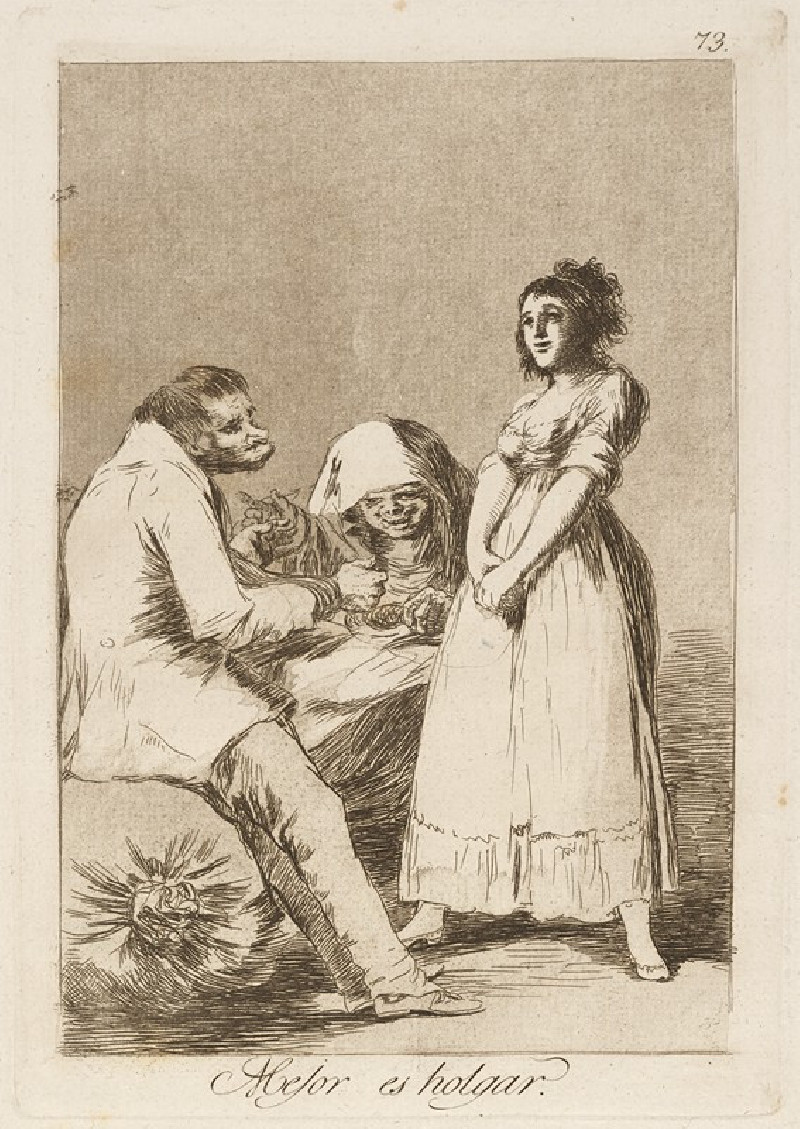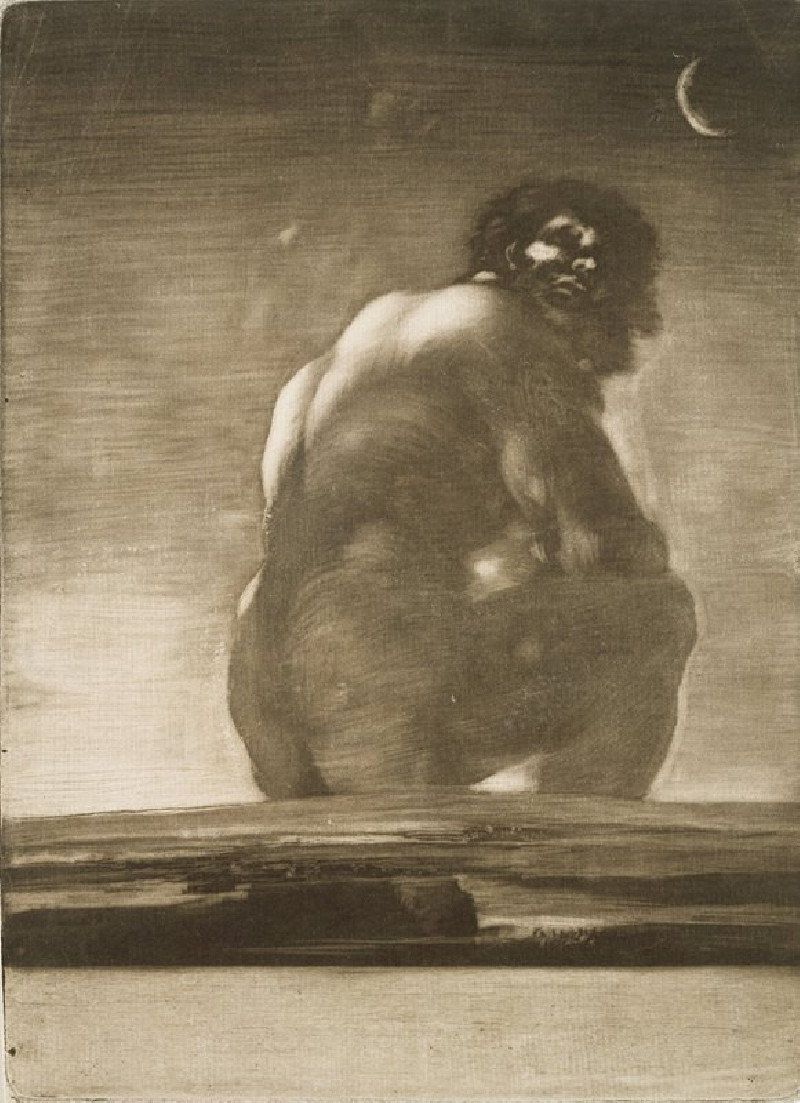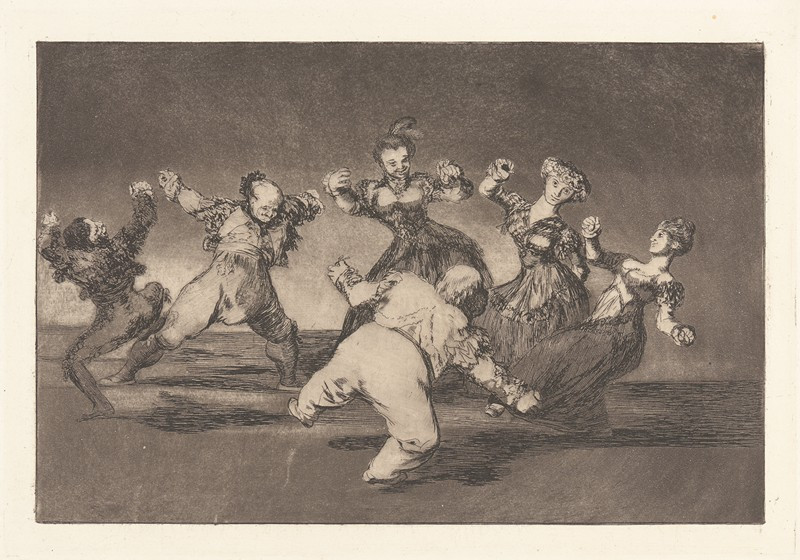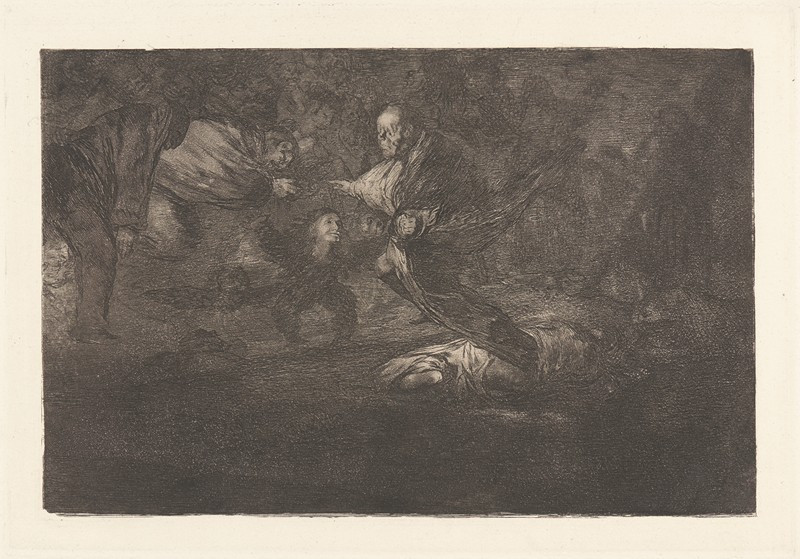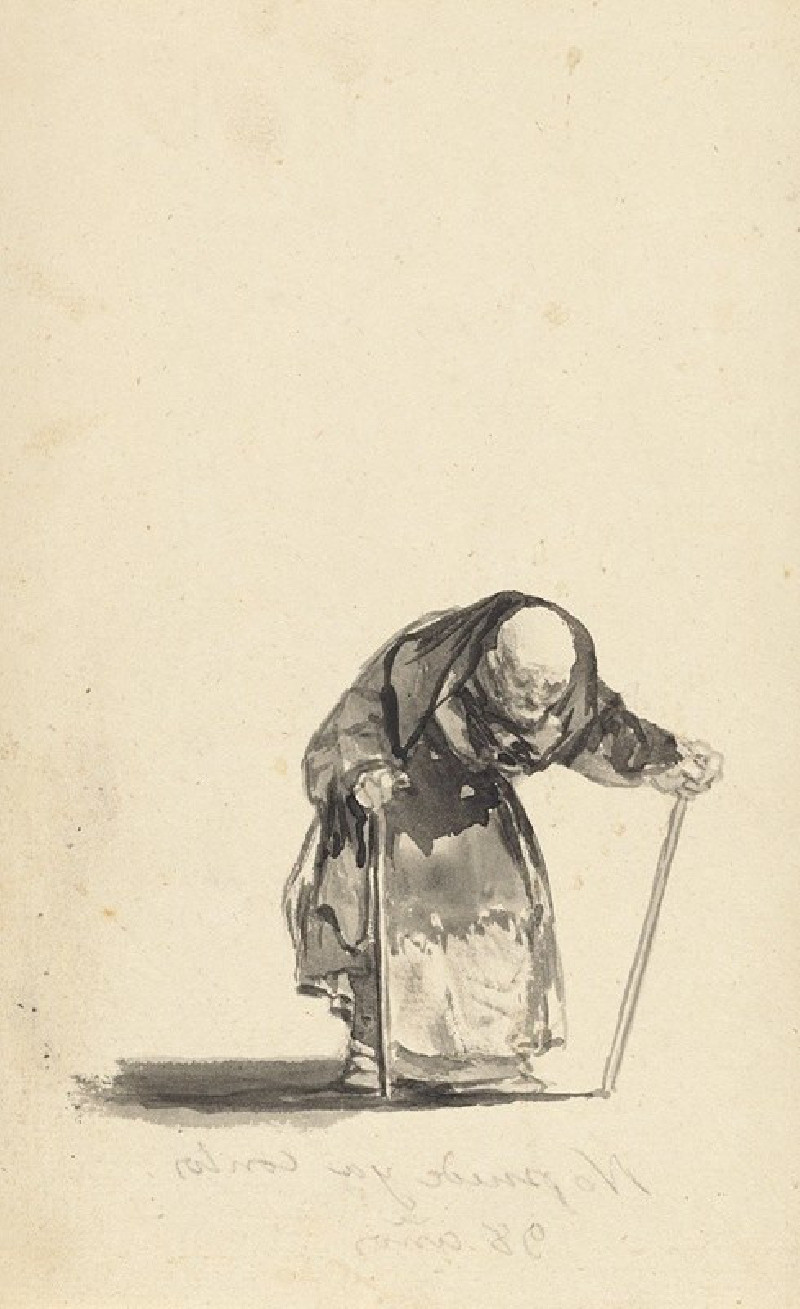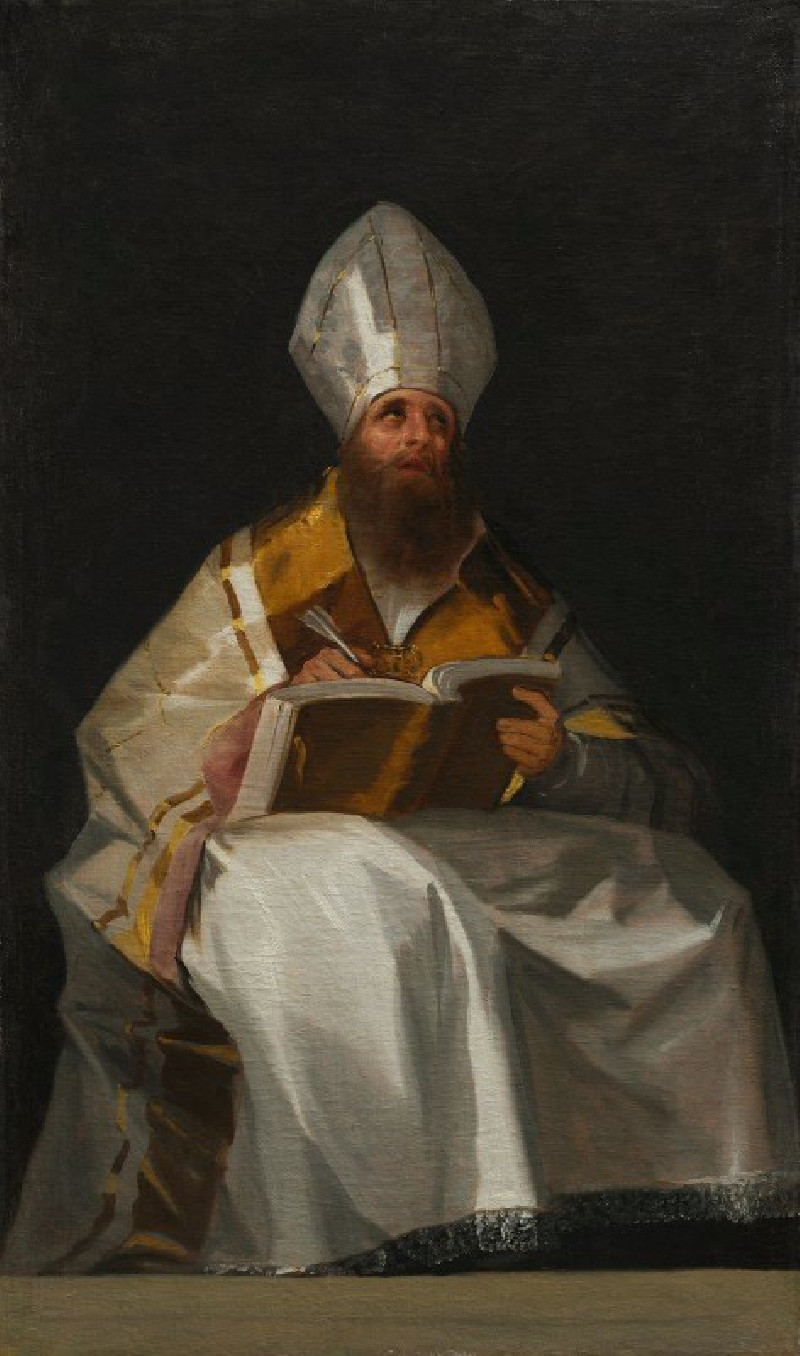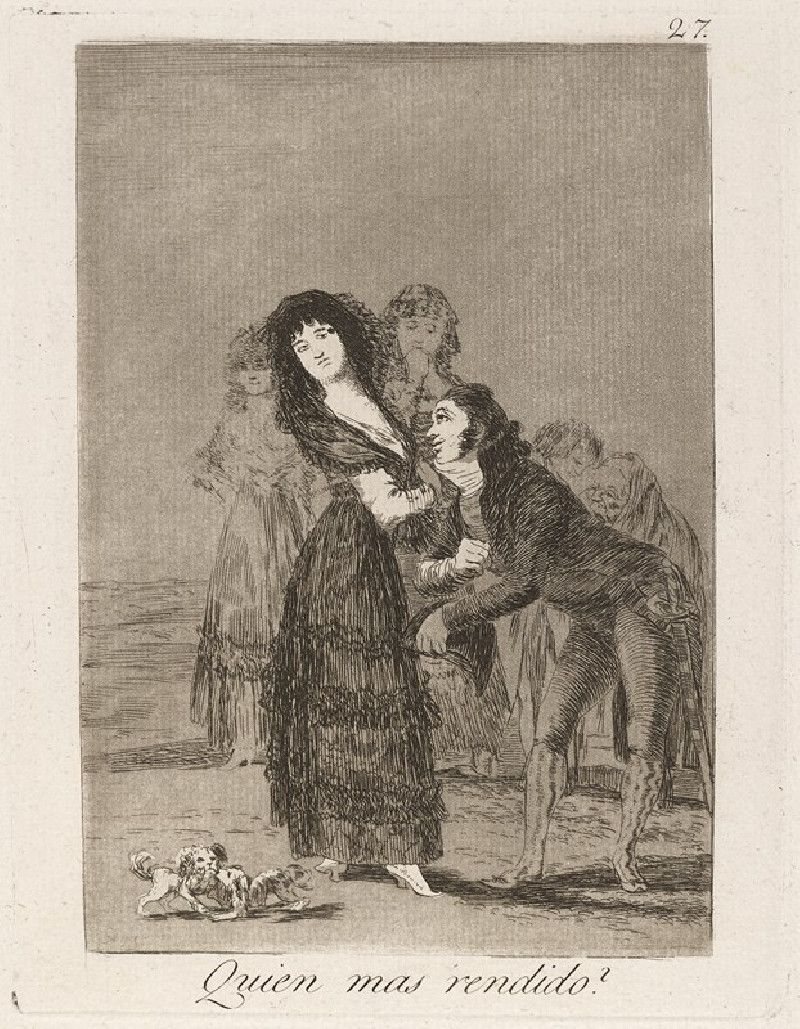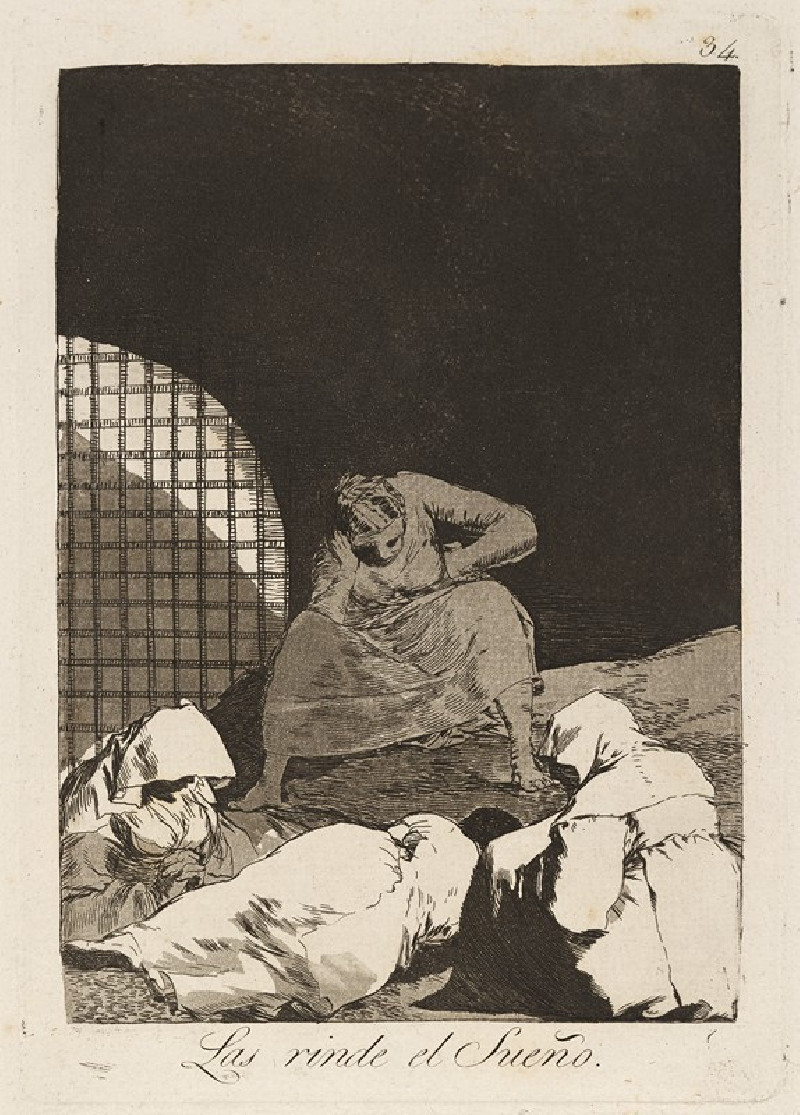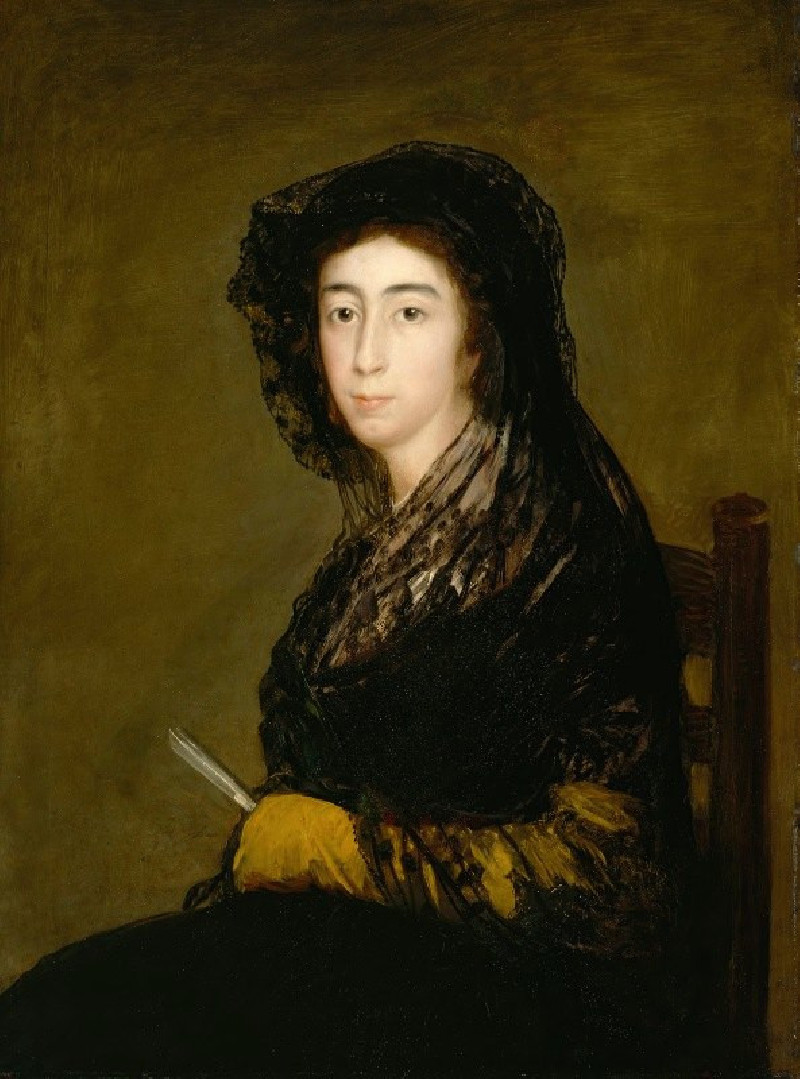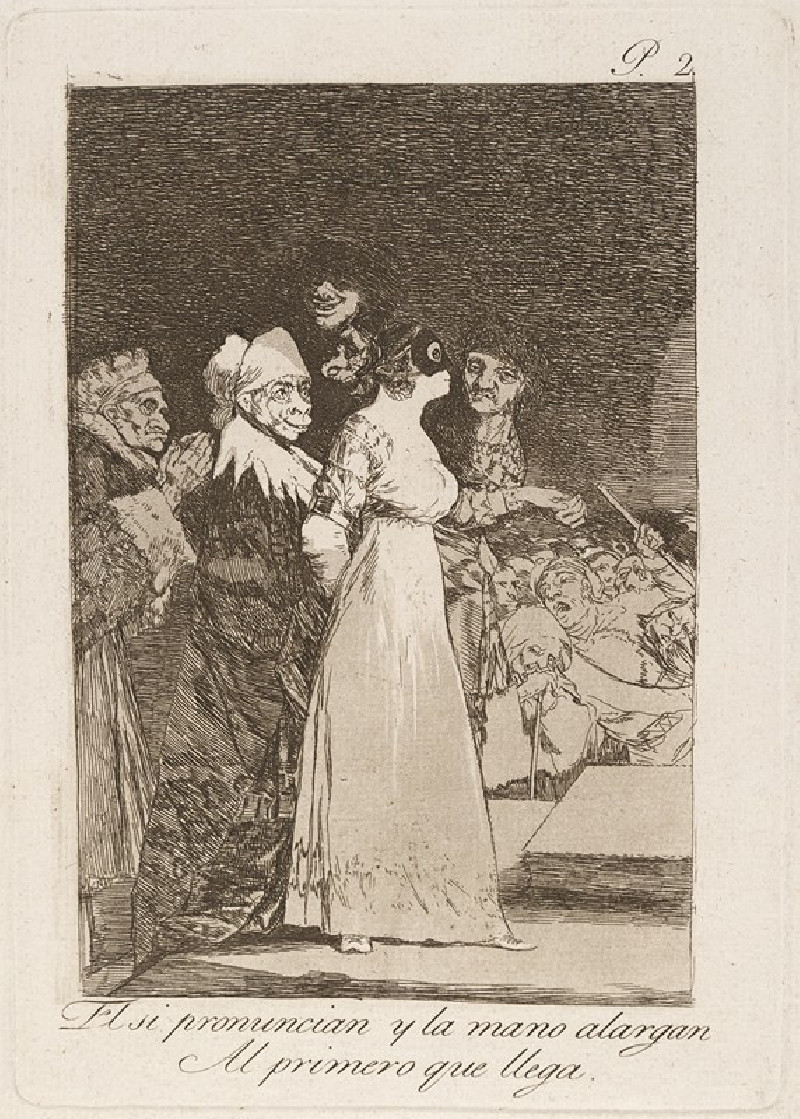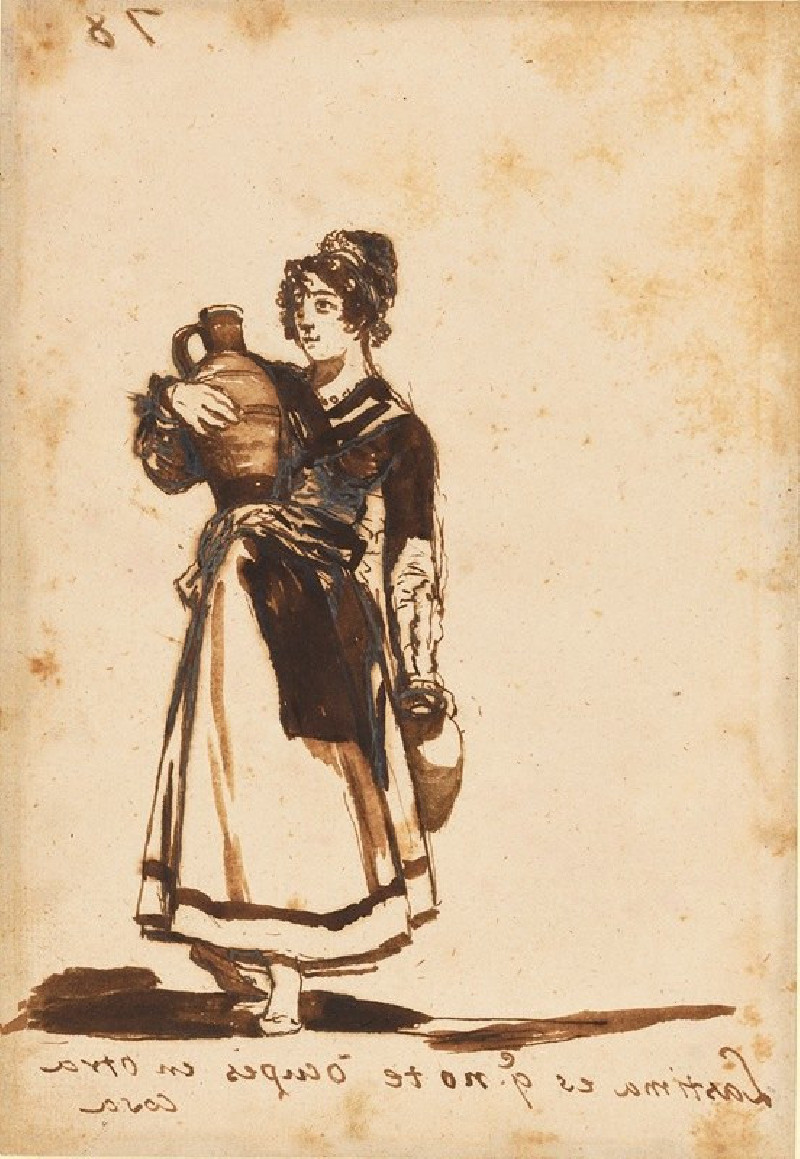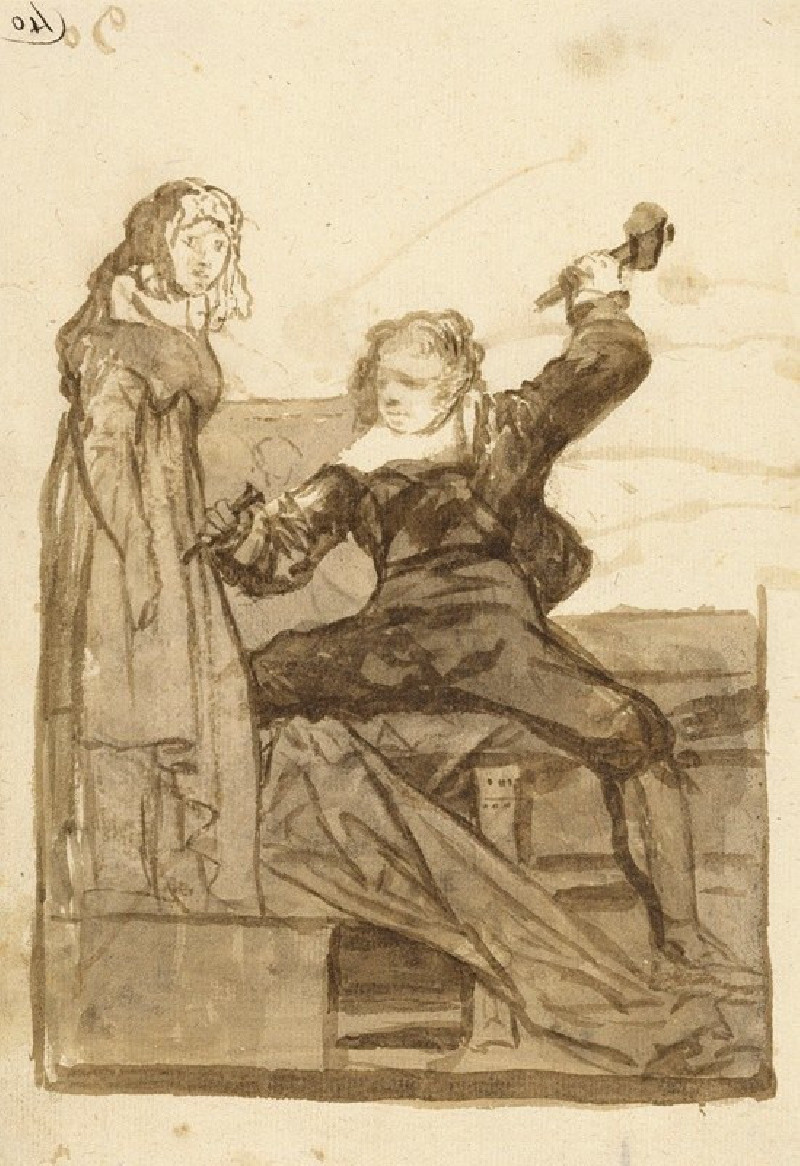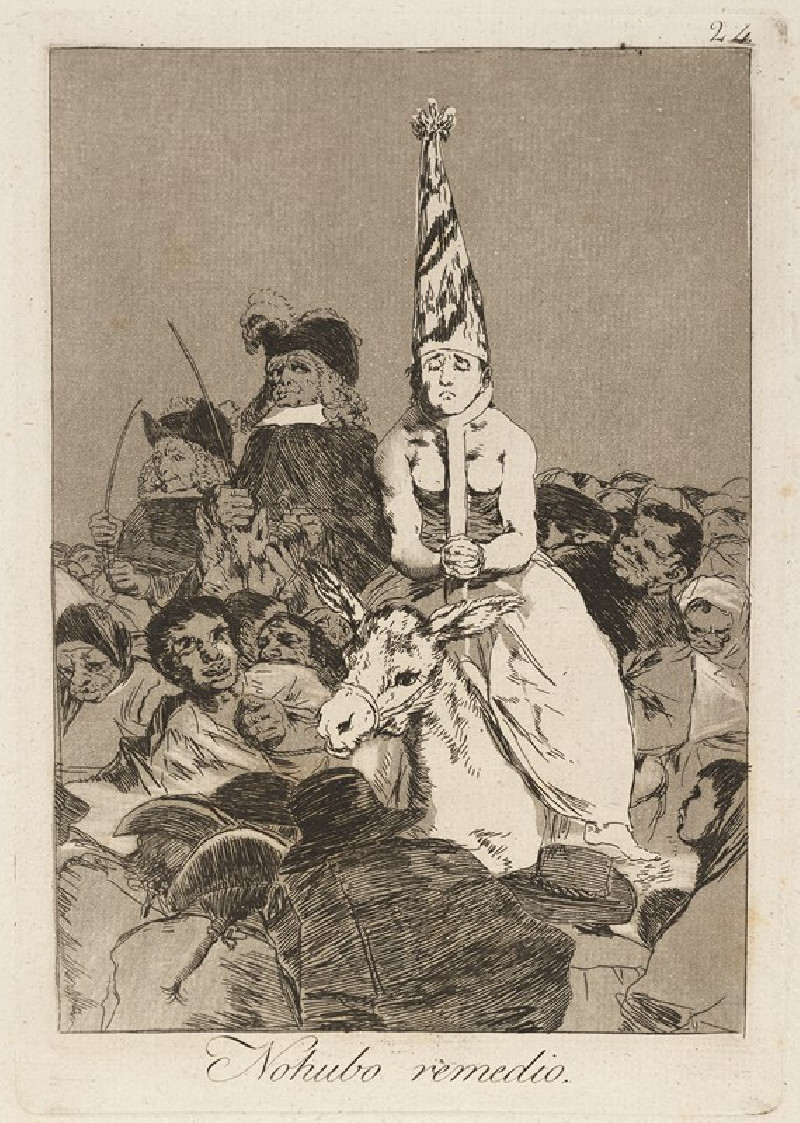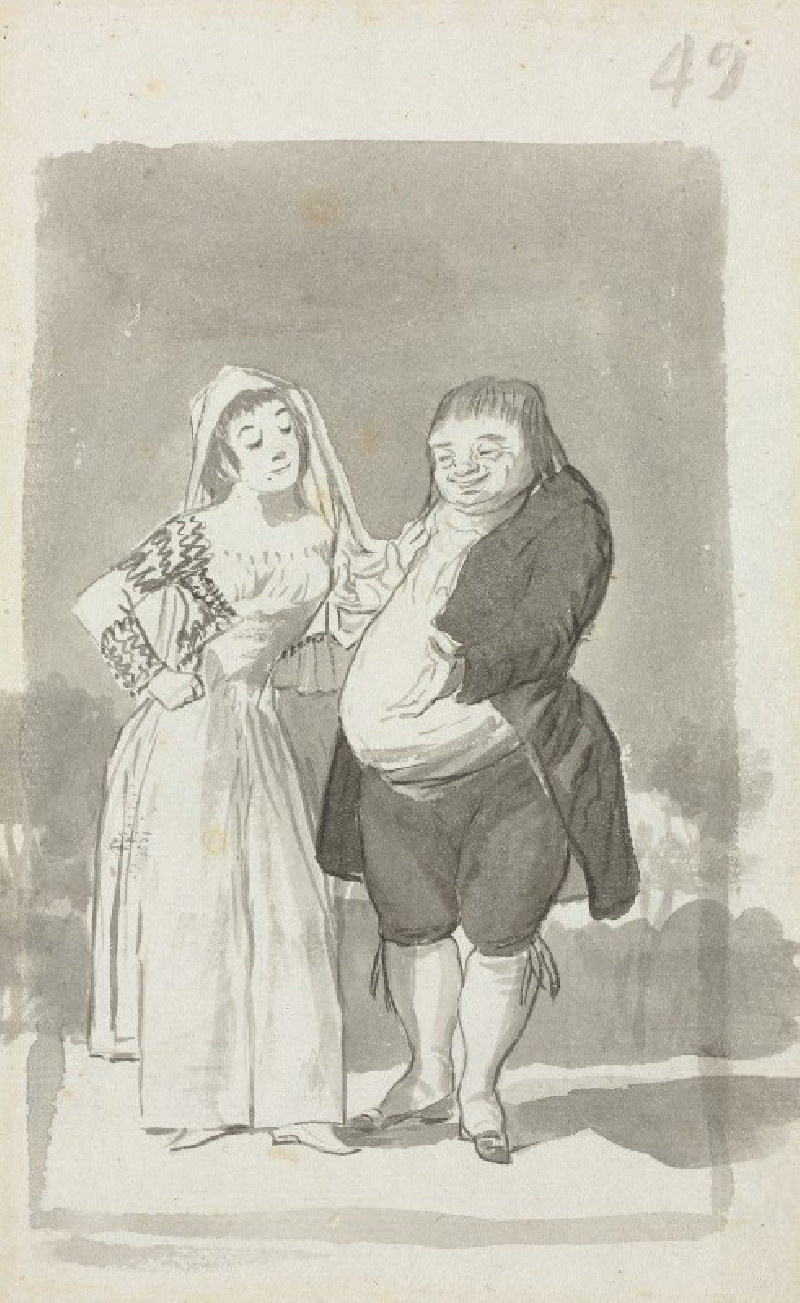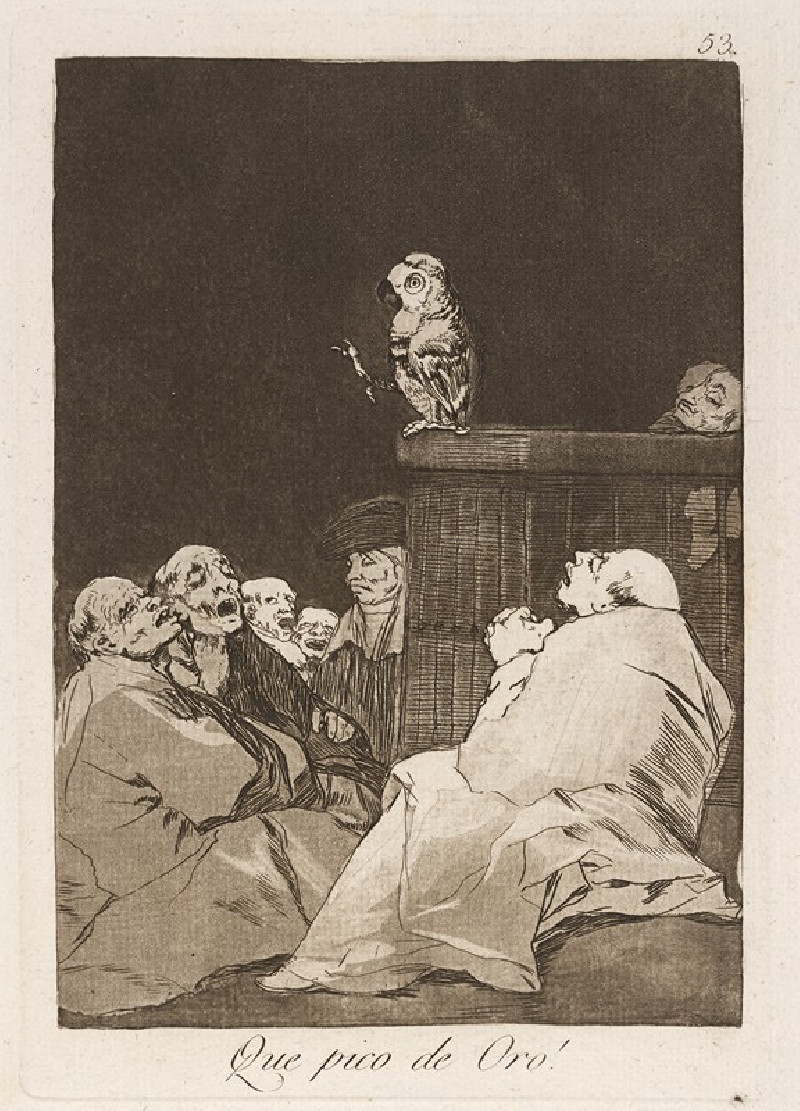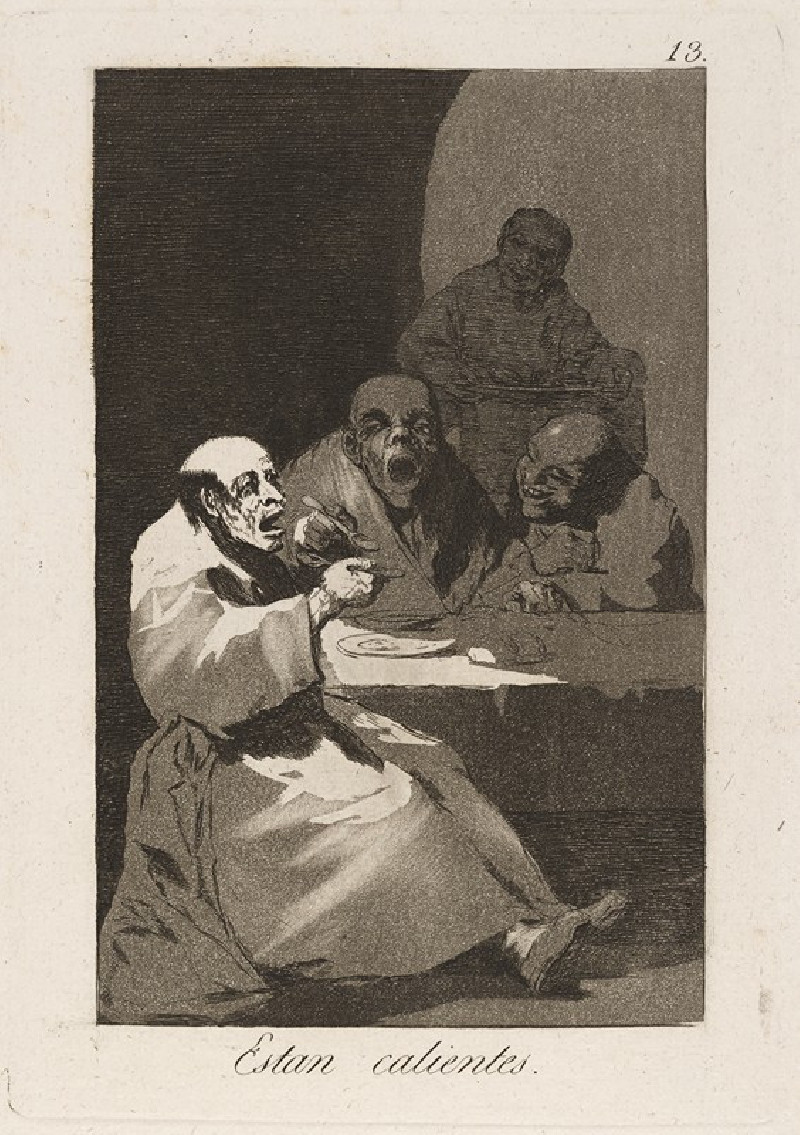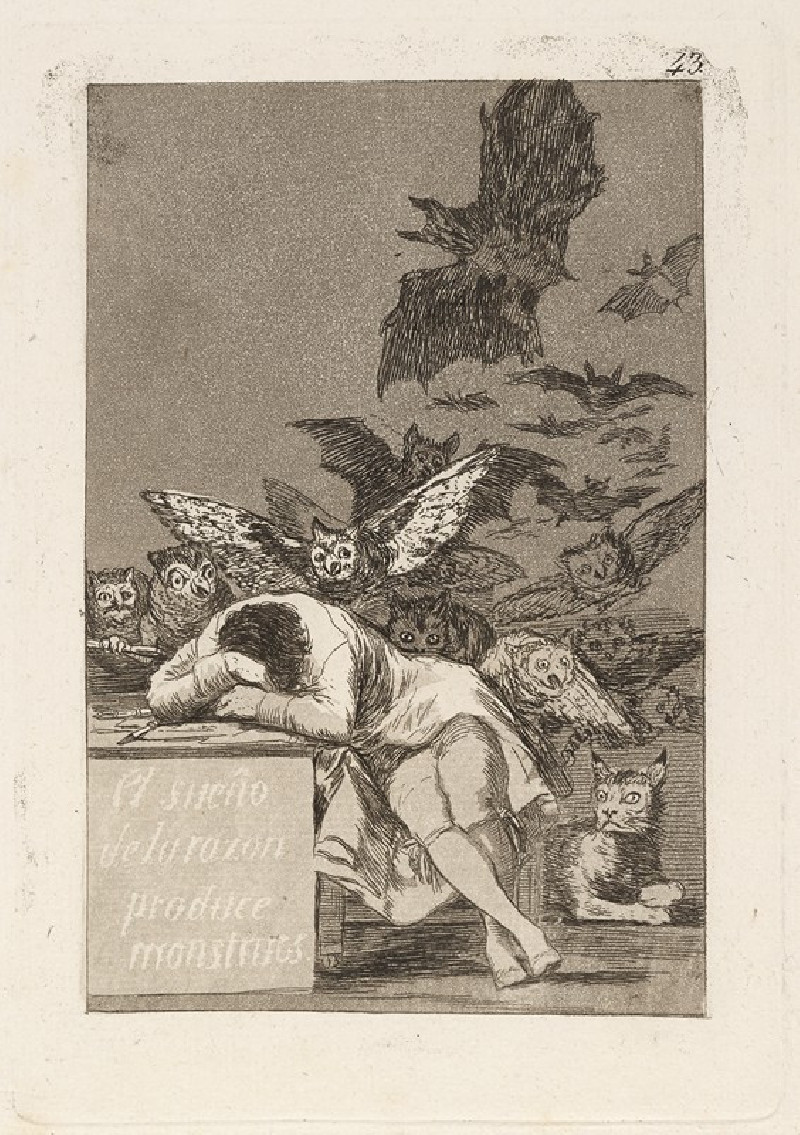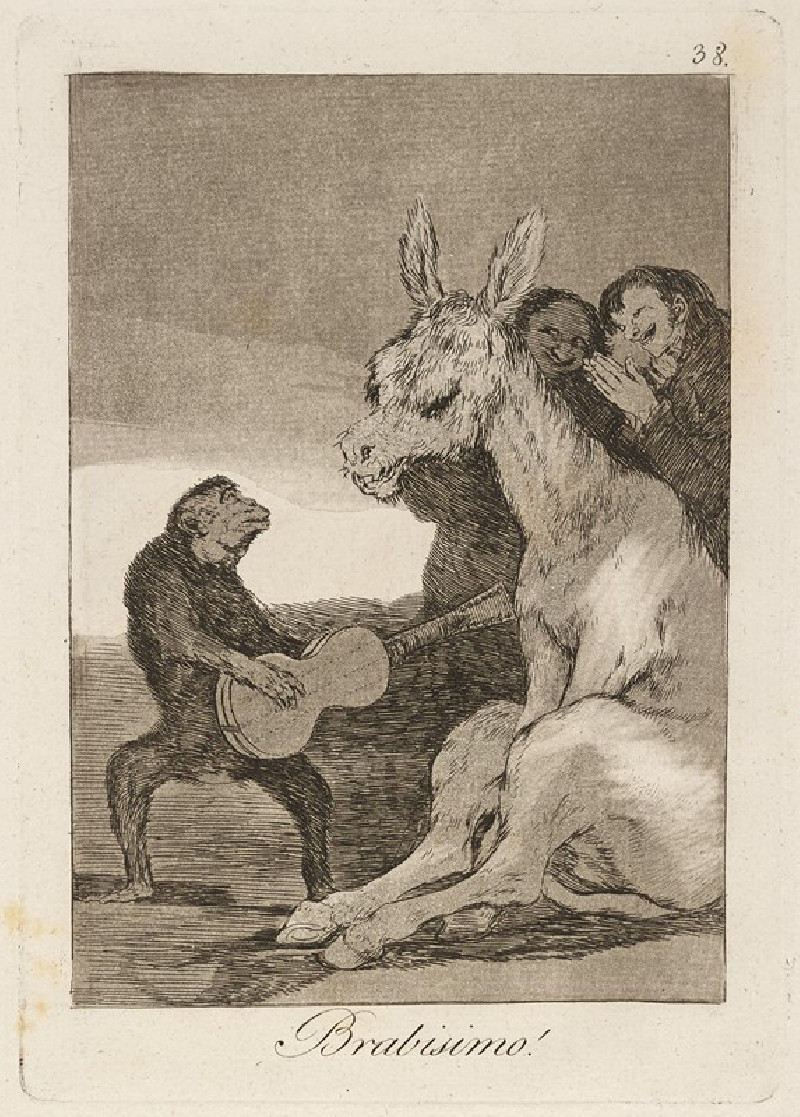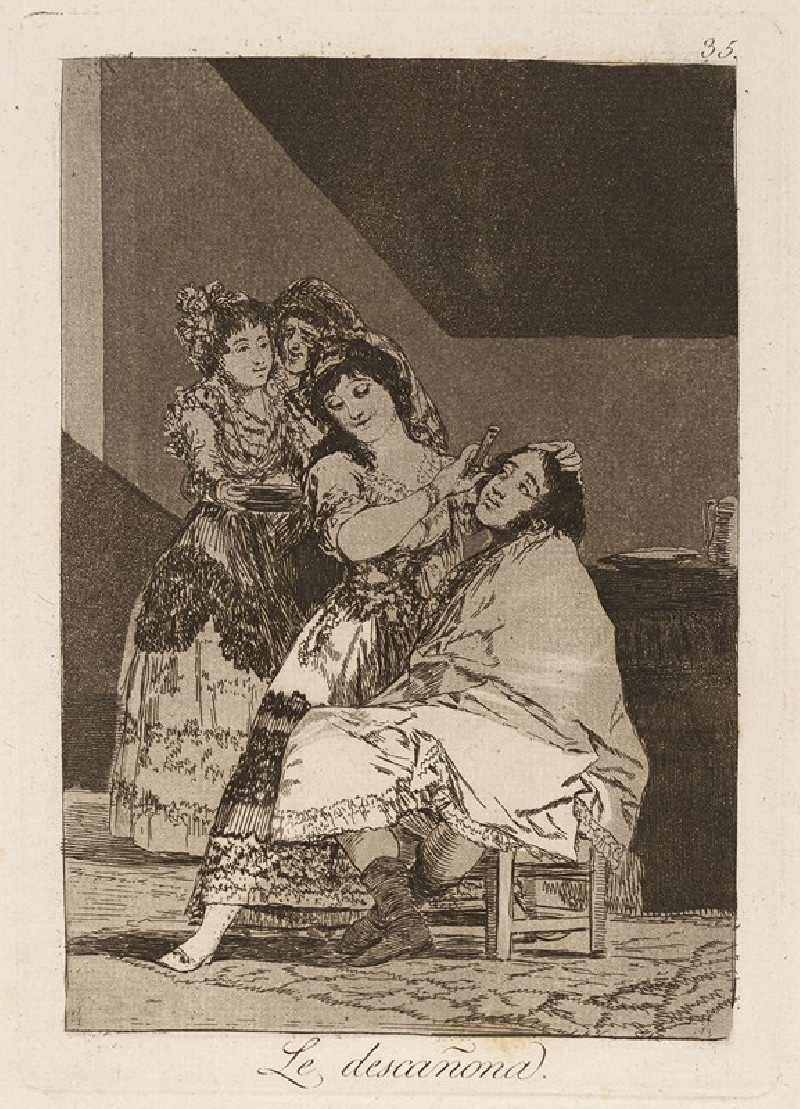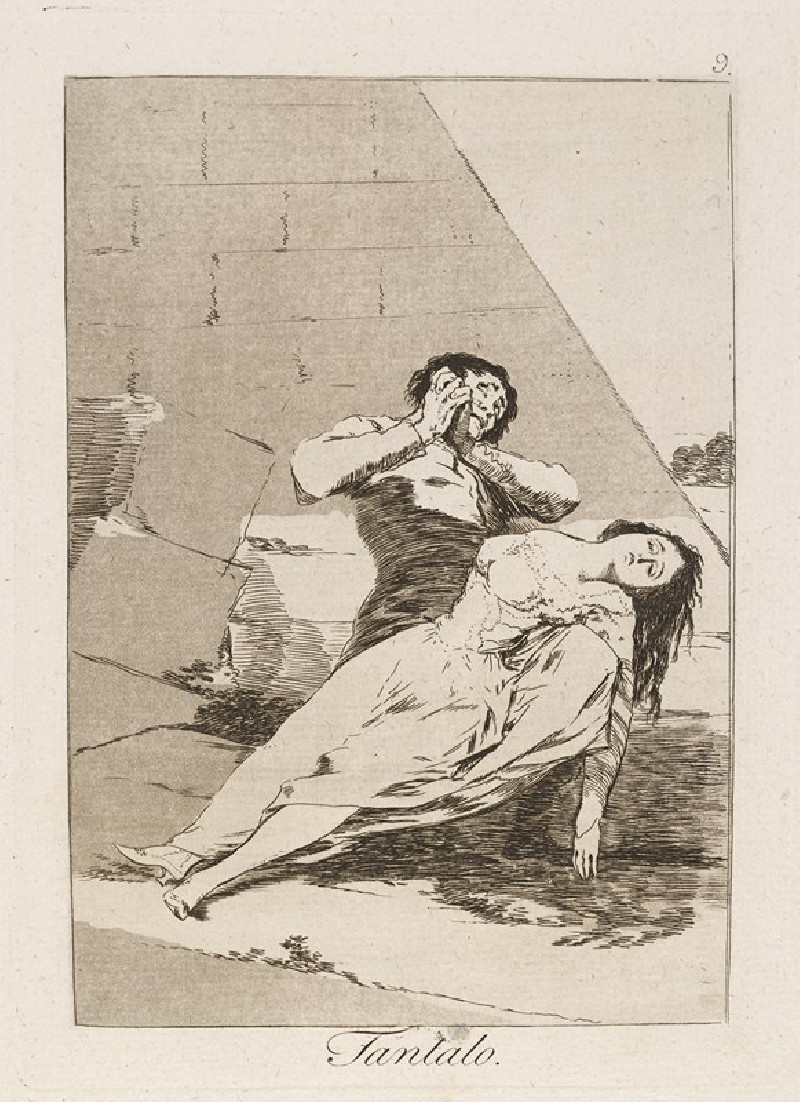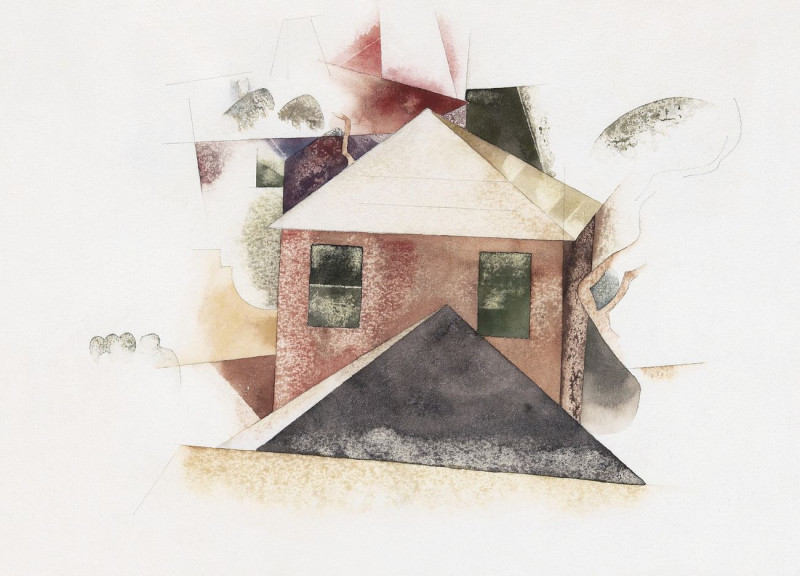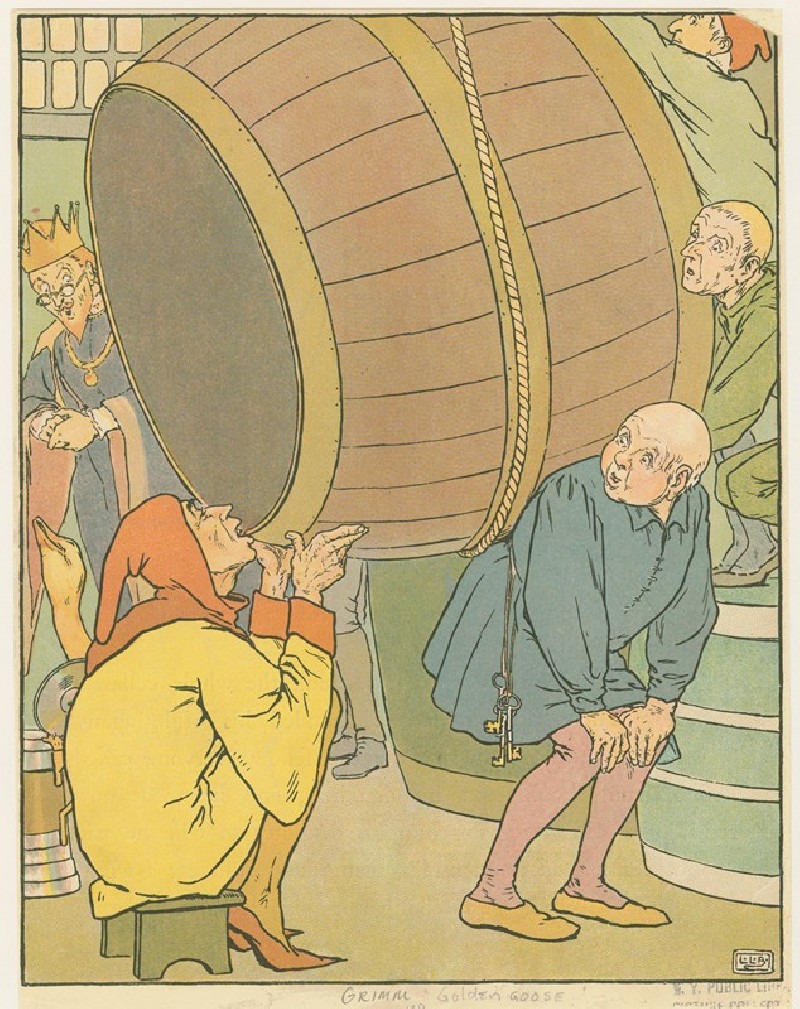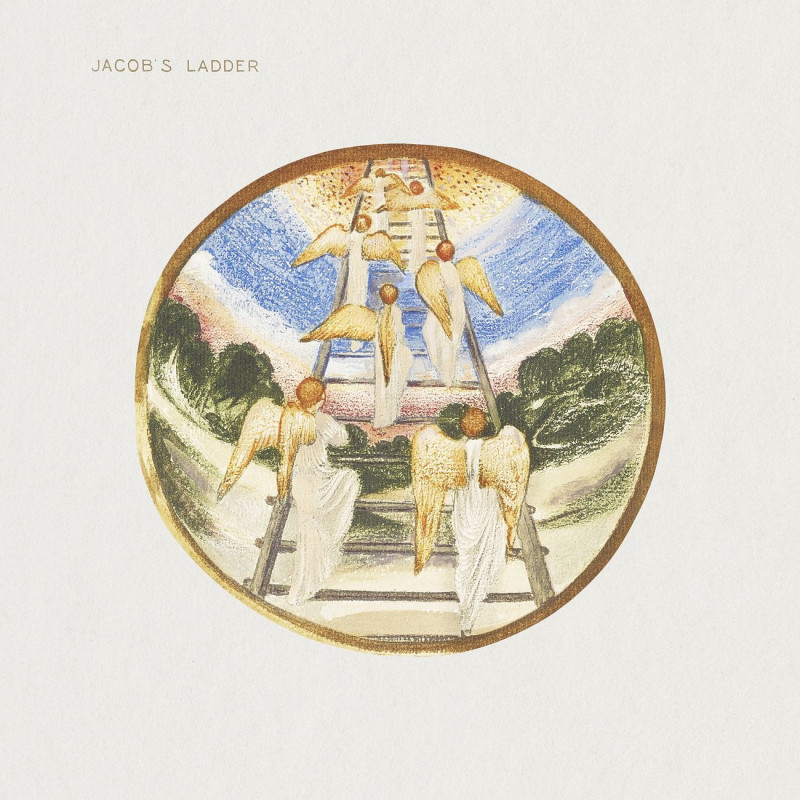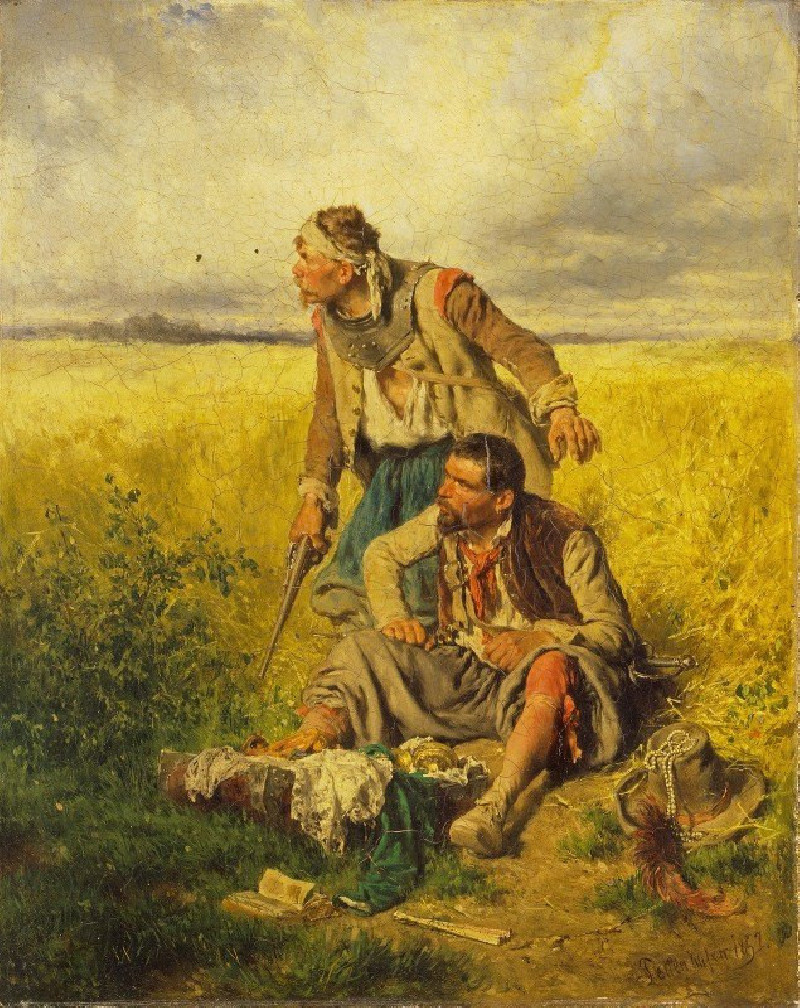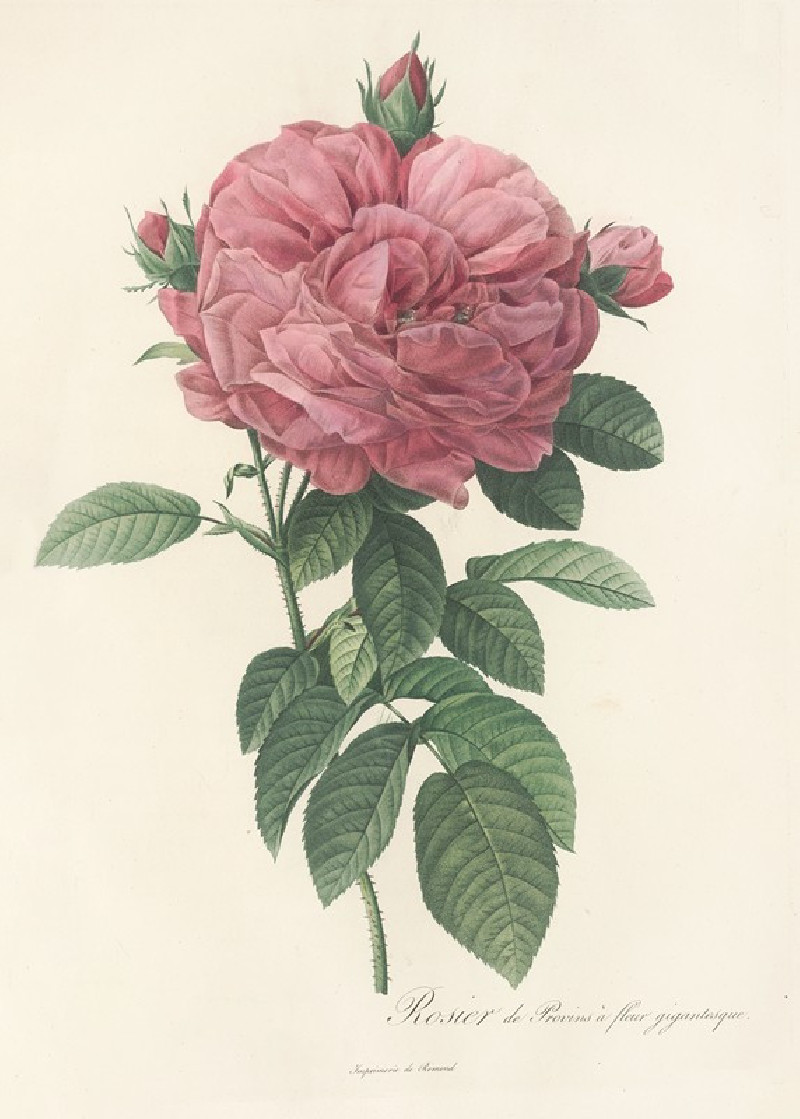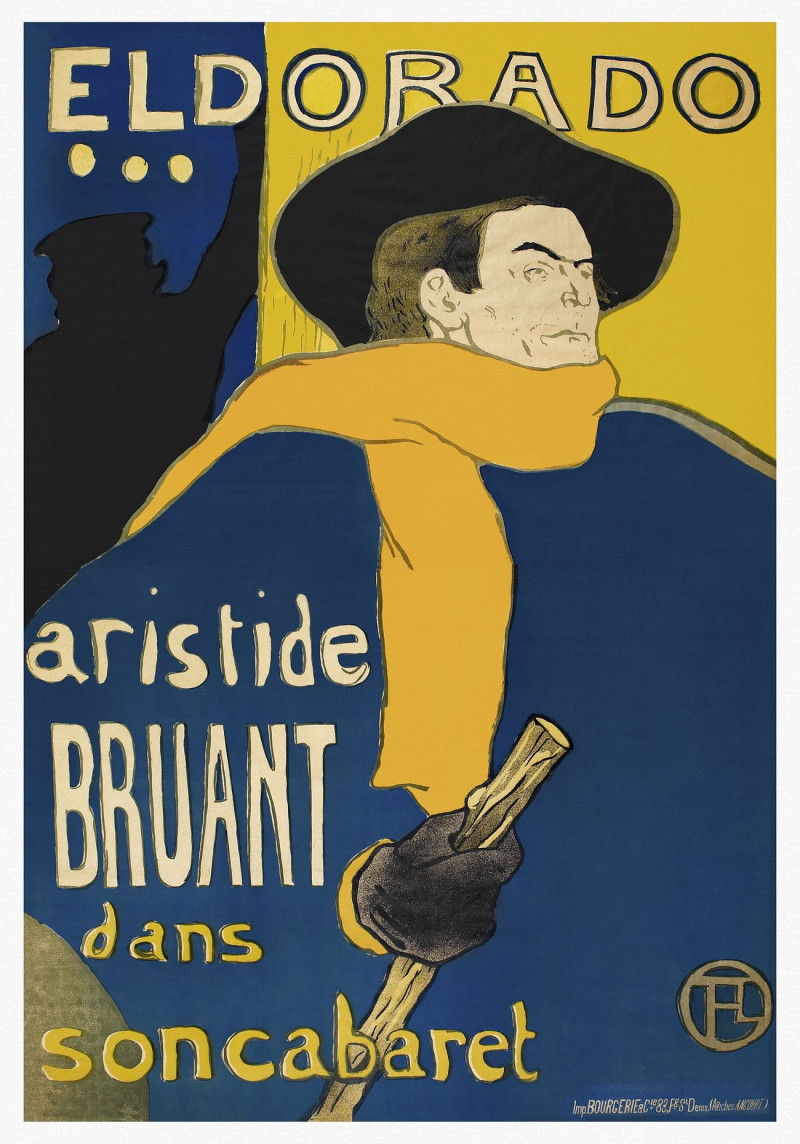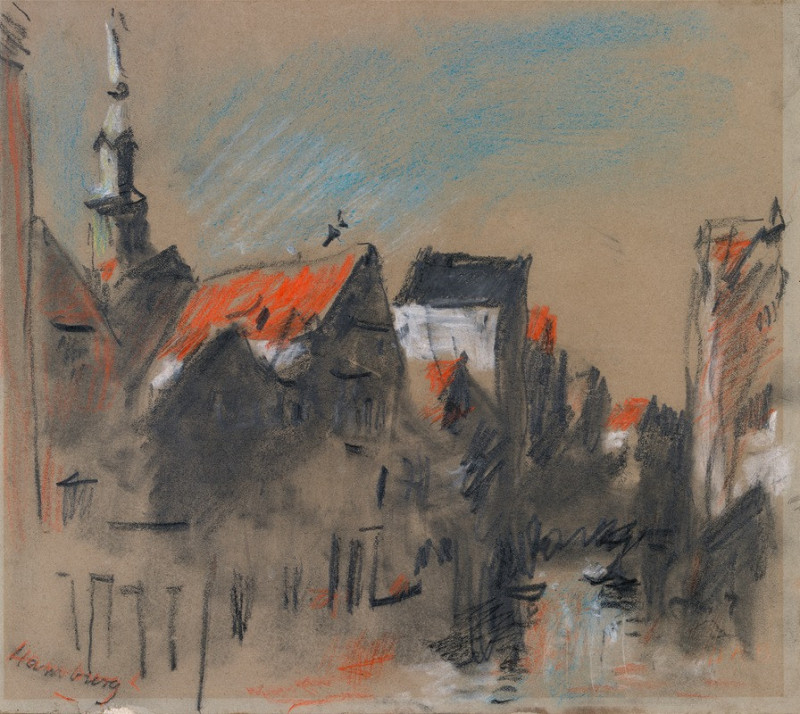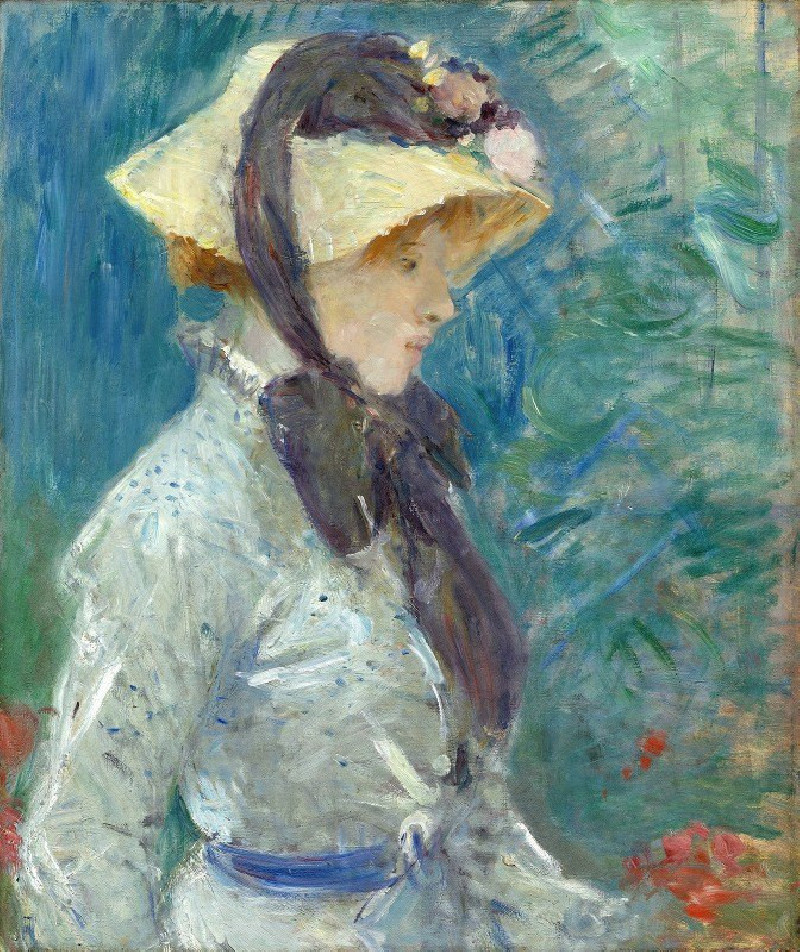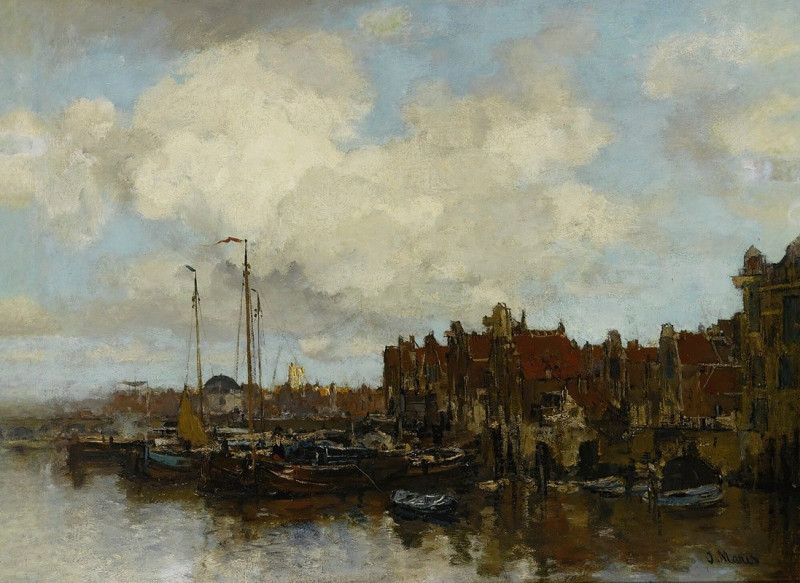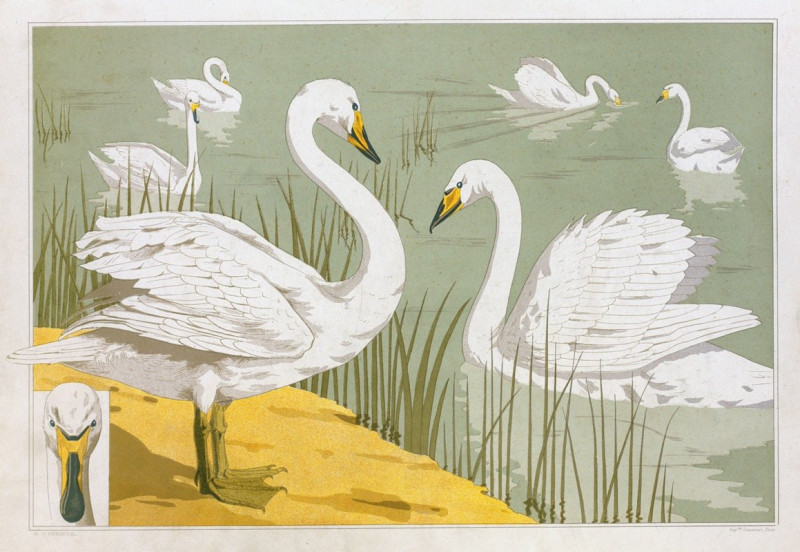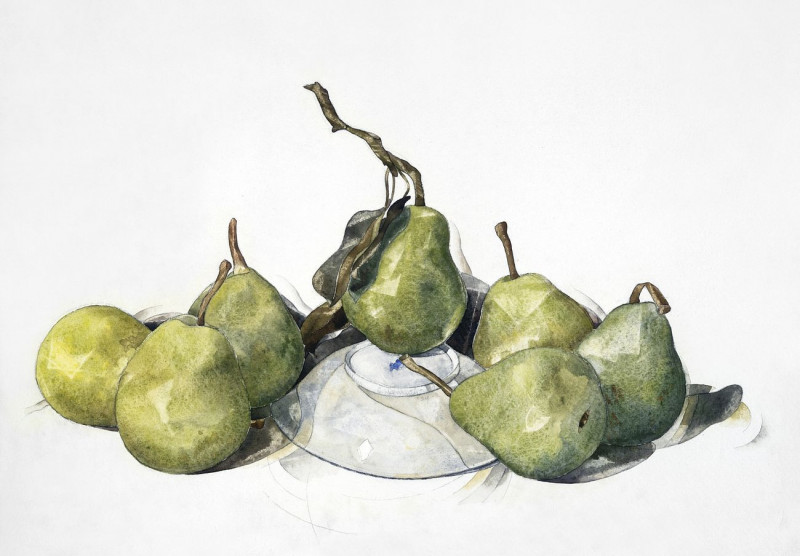Mejor es holgar. (It is better to be lazy.) (1796-1797)
Technique: Giclée quality print
Recommended by our customers
More about this artwork
"" (It is Better to Be Lazy) is an evocative etching by the celebrated Spanish painter and printmaker Francisco de Goya, created during the years 1796-1797. This piece is part of Goya's renowned series, *Los Caprichos*, which comprises eighty aquatint and etchings that critique the social, political, and religious fabric of late 18th-century Spain.In this particular work, Goya presents a nuanced scene involving three figures. The central subject is a woman, a traditional figure of youth and beauty, who stands with a calm yet somewhat fixed gaze directed towards the viewer. To her right, two figures—presumably male—are absorbed in a game of cards, their expressions distorted in concentration and perhaps deceit, hinting at the moral corruption Goya often depicted in his works.The etching is masterfully composed, with robust, textural lines that evoke a deep sense of intimacy yet alienation among the subjects. The title, "It is Better to Be Lazy," might imply a satirical take on the idleness and folly Goya observed in his society. This work's stark imagery and social commentary offer a timeless reflection on human behavior, making it a profound piece for reflection.Displayed in museums and galleries around the world, "Mejor es holgar" continues to captivate viewers, offering insight into Goya's critical eye and artistic mastery.
Delivery
Returns
Francisco José de Goya y Lucientes (30 March 1746 – 16 April 1828) was a Spanish romantic painter and printmaker. He is considered the most important Spanish artist of the late 18th and early 19th centuries. His paintings, drawings, and engravings reflected contemporary historical upheavals and influenced important 19th- and 20th-century painters. Goya is often referred to as the last of the Old Masters and the first of the moderns.

